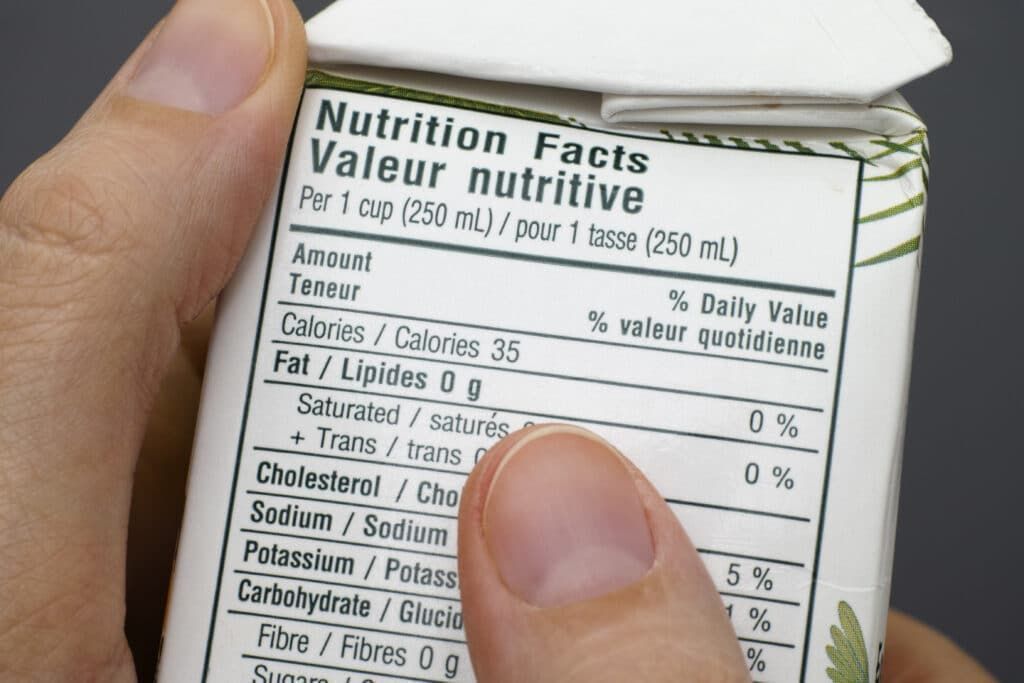How to read a food label ?
To better understand what we eat, many of the food products we consume have a food label. This standardized label The information that can be found on a large majority of foodstuffs includes the nutritional composition of foodstuffs. Energy, fat, carbohydrates including sugars, salt, protein per 100g… learn how to read a food label today.
How to read food labels ?
On the food labels, you can find several information that the manufacturers must indicate:
- The sales name: this is what the product is;
- List of ingredients: the higher an ingredient is on the list, the higher the concentration of that ingredient in the product. This list also includes the different allergens that may be present in the product;
- Net quantity ;
- Date of consumption ;
- Name of the manufacturer, packager and/or seller;
- Place of origin of manufacture;
- Manufacturing batch;
- How to use it.
Logos can also appear on the labels of food products. It may be a logo indicating the different ways to recycle the product packaging, but also logos of label that can sometimes indicate the quality of a product:
- Organic labels (AB);
- Red Label;
- Appellation d’Origine Contrôlée (AOC);
- Blue White Heart;
- Fairtrade ;
- Elected product of the year ;
- etc.
Finally, the nutritional composition is a mandatory information that the manufacturer must indicate on the label of a food product. This takes the form of a table of the nutritional value of the product concerned. The manufacturer must include several mandatory information for prepackaged food products:
- the energy value (energy): indicated in number of calories (kcal and kJ) ;
- the amount of fat (including the amount of saturated fatty acids) ;
- the amount of carbohydrates (including the amount of sugars);
- the quantity of proteins ;
- the amount of salt.
The manufacturer is then free to add other information concerning the quantities of fiber, starch, vitamins, minerals or mono- and polyunsaturated fatty acids.
All of these amounts are listed in grams per 100 g or 100 mL of product. The manufacturer may then choose to display additional numbers for an amount of nutrients per serving or a percentage related to the Recommended Daily Allowance (RDA) for each nutrient.
Note: We find more and more today the nutri-score on the labels of food products (between A and E). This is not mandatory for the moment, but can give you a quick and reliable indication of the nutritional quality of a product.
How to interpret the Nutrition Facts table ?
Let’s see point by point how interpret the nutritional value of a product :
- Energy: this is the caloric intake of a food. An adult needs an average of 2000 kcal per day. Counting calories with the nutritional composition can help you eat better every day;
- Fats (lipids): essential to the proper functioning of the body, it is generally recommended to consume 70 g of lipids each day. The amount of saturated fatty acids is specified, as these are believed to be related to cardiovascular health;
- Carbohydrates: a complementary source of energy. The line “of which sugars” corresponds to simple sugars (fast sugars). It is recommended to consume a total of 260 g of carbohydrates per day for an adult;
- Proteins: proteins can be found in meat, fish, milk or eggs, but also in vegetable products. If more than 20% of the product’s calories come from proteins, the food is said to be rich in proteins;
- Salt: the less salt, the better’is ;
- Fiber: it is recommended to consume about 30 g of fiber per day.
Note: the amount of nutrients to consume daily depends on your height, weight and physical activity.

How to understand the nutritional composition ?
Having concrete figures on the different nutrients present is a good starting point for decipher a food label. However, with this information alone, you may not have all the elements of understanding necessary to conduct a proper analysis of the nutritional composition of a product.
To properly interpret the nutritional value table, the easiest way is to have products with RDA indications. You can easily know what a portion of a product brings you.
For the rest, some additional knowledge in addition to the recommended grammages may be necessary to understand the nutritional composition of a product. Your needs may also vary according to your lifestyle (weight loss, sports, etc.).).
Why nutritional information is important ?
On a daily basis, it is difficult to know if you are eating well. If we can easily know that cheese is fatty, that a cake is sweet or that a packet of chips is salty, we sometimes have to go beyond these shortcuts to know if we are not consuming nutrients in excess.
Indeed, to be healthy, it is important to eat a balanced diet: not too fatty, not too sweet, not too salty.
The nutritional information serve to inform you as a consumer once you have learned to quickly decipher them. Finally, they allow you to compare several similar products between them.
